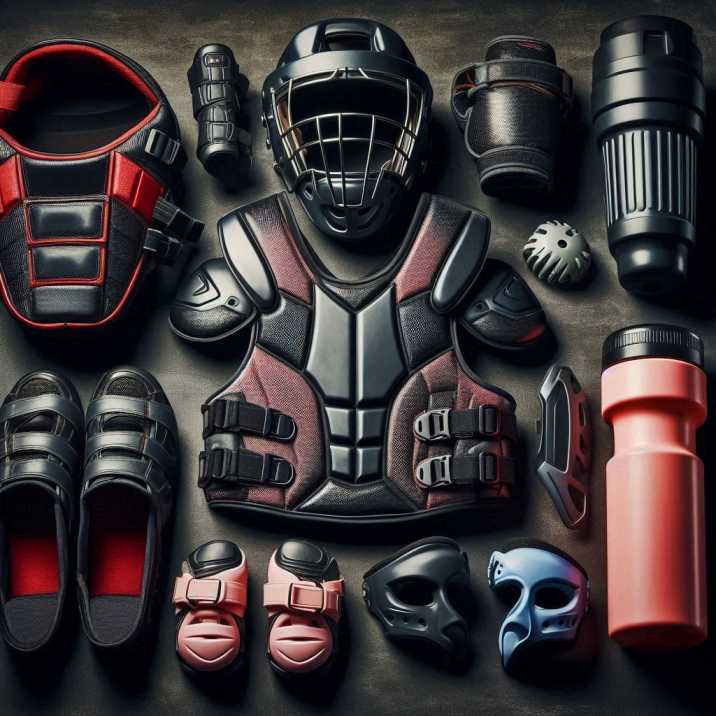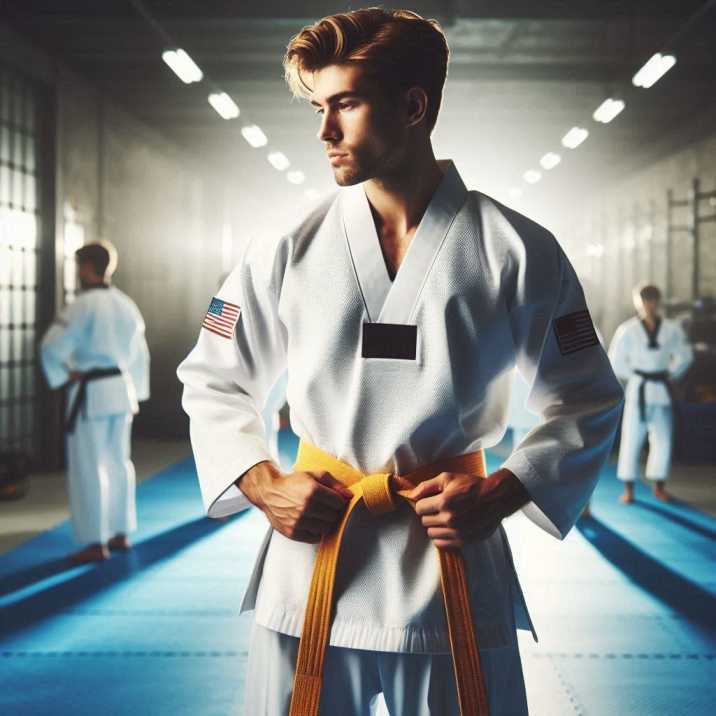If you’re pondering over the thought of diving into the realm of Taekwondo, a question that might be bouncing around in your mind like a sparring match is, “Do I need special equipment for Taekwondo?” This query isn’t just a fleeting concern; it’s a pivotal inquiry that sets the stage for your journey into the world of this ancient martial art. In this comprehensive guide, we’ll embark on a detailed exploration of all the equipment essentials required for Taekwondo practice. From the significance of each gear to insightful tips on how to choose the right equipment, consider this your go-to manual before stepping onto the mat. So, grab your dobok and let’s dive deeper into the realm of Taekwondo gear!

Uniform (Dobok)
Table of Contents
Importance of the Dobok
The dobok, much more than just a garment, stands as a symbol of tradition, discipline, and respect in the world of Taekwondo. Wearing the dobok isn’t merely a matter of attire; it’s a visual representation of dedication and adherence to the principles of this martial art.
Components of the Dobok
- Jacket: Crafted for mobility and comfort, the jacket of the dobok ensures ease of movement during practice sessions.
- Pants: The loose-fitting pants are tailored to accommodate the dynamic kicks and swift movements integral to Taekwondo.
- Belt (Ti): Serving as a testament to progression, the belt, or “ti,” signifies a practitioner’s journey through the ranks, from the purity of white to the pinnacle of mastery represented by the black belt.

Belts
Decoding the Belt Hierarchy
The belt system in Taekwondo isn’t merely a spectrum of colors; it’s a visual representation of one’s evolution, both in skill and character.
- White Belt: Embarking on the journey, symbolizing purity and the blank canvas of potential.
- Yellow Belt: Akin to the first rays of dawn, signifying the awakening of knowledge and understanding.
- Green Belt: Representing growth and the blossoming of skills.
- Blue Belt: Reflecting the vast expanse of the sky, embodying ambition and aspiration.
- Red Belt: A warning, a signal to tread cautiously, acknowledging the depth of knowledge yet to be attained.
- Black Belt: The zenith, a culmination of years of dedication, discipline, and unwavering commitment to the art.
Protective Gear
Essential Guardians of Safety
Safety reigns supreme in the realm of Taekwondo, and protective gear stands as the frontline defense against potential injuries.
- Headgear: Shielding the cranium from impacts, ensuring practitioners spar with confidence.
- Mouthguard: Safeguarding the teeth and oral cavity, an indispensable accessory for sparring sessions.
- Chest Protector (Hogu): Fortifying the torso against strikes, ensuring safety without compromising mobility.
- Forearm Guards: Providing a barrier against powerful blows, essential for blocking and counter-attacks.
- Shin Guards: Shielding the shins from the brunt of kicks, minimizing the risk of painful impacts.
- Groin Protector: A crucial component for male practitioners, offering protection in a vulnerable area.
Training Equipment for Taekwondo
Amplifying Training Effectiveness
In the pursuit of mastery, Taekwondo practitioners utilize various training aids and equipment to hone their skills and enhance their performance.
- Kicking Pads: Serving as targets for precision strikes and powerful kicks, aiding in technique refinement.
- Punching Bags: Enduring partners in training, facilitating strength development and striking accuracy.
- Breaking Boards: Symbolizing barriers to be overcome, showcasing the fusion of power, precision, and technique.
- Stretching Equipment: Facilitating flexibility enhancement, enabling practitioners to reach new heights in their abilities.
Footwear
The Barefoot Tradition vs. Specialized Footwear
In the sacred space of the dojang, the choice between bare feet and specialized footwear is more than a matter of preference; it’s a reflection of tradition and practicality.
- Taekwondo Shoes: Offering a blend of protection and mobility, these lightweight shoes are favored by some practitioners for their comfort and grip.
- Benefits: From protection against rough surfaces to added stability during training, Taekwondo shoes provide a layer of comfort and safety.
Care and Maintenance of Equipment
Strategies for Equipment Longevity
Preserving the integrity of your Taekwondo gear is paramount for ensuring both safety and longevity. Here are some essential care tips:
- Cleaning the Dobok: Regular washing and proper care ensure that your dobok remains pristine, free from odors and stains.
- Inspecting Protective Gear: Routinely check your protective gear for signs of wear and tear, promptly replacing any damaged components.
- Storage Practices: Store your equipment in a dry, well-ventilated area away from direct sunlight, minimizing the risk of deterioration.
Buying Guide
Expert Tips for Choosing the Right Gear
Navigating the myriad options when it comes to Taekwondo gear can be overwhelming. Here’s a concise guide to help you make informed decisions:
- Prioritize Quality: Invest in high-quality gear crafted from durable materials, prioritizing safety and longevity.
- Ensure Proper Fit: Ill-fitting equipment can impede performance and compromise safety; opt for gear that fits snugly and comfortably.
- Budget Considerations: While it’s tempting to opt for the most economical options, remember that quality gear is an investment in your safety and progression.
Table of Information about Equipment for Taekwondo
| Subtopic | Description |
|---|---|
| 1. Uniform (Dobok) | Significance and components of the Taekwondo uniform. |
| 2. Belts | Decoding the belt hierarchy in Taekwondo. |
| 3. Protective Gear | Essential protective gear to safeguard practitioners. |
| 4. Training Equipment | Tools and equipment amplifying training effectiveness. |
| 5. Footwear | Delving into the necessity of specialized footwear. |
| 6. Care and Maintenance of Equipment | Strategies for ensuring equipment longevity. |
| 7. Buying Guide | Expert advice on purchasing the right Taekwondo gear. |
| 8. Frequently Asked Questions | Addressing common queries about Taekwondo equipment. |
Conclusion
In Conclusion, Do I need special equipment for taekwondo? Taekwondo requires specialized equipment to ensure safety and effectiveness in practice. From the traditional dobok to protective gear and training taekwondo equipment, each piece plays a vital role in the practitioner’s journey. Whether it’s donning the symbolic belt or investing in quality gear, every aspect contributes to the essence of Taekwondo. So, while the question may be simple, the answer underscores the significance of these tools in embodying the spirit of this martial art.
Frequently Asked Questions (FAQs)
1. Do I need special equipment for Taekwondo?
Yes, specialized equipment is essential for practicing Taekwondo safely and effectively.
2. Can I train Taekwondo without a uniform?
While technically possible, wearing a dobok is highly recommended for both practical and traditional reasons.
3. How often should I replace my protective gear?
Regularly inspect your protective gear for signs of wear and tear, replacing any compromised components promptly.
4. Are Taekwondo shoes mandatory?
While not mandatory, Taekwondo shoes offer added protection and comfort during training sessions.
5. Where can I buy Taekwondo equipment?
Taekwondo equipment is readily available at martial arts supply stores, online retailers, and select sporting goods


